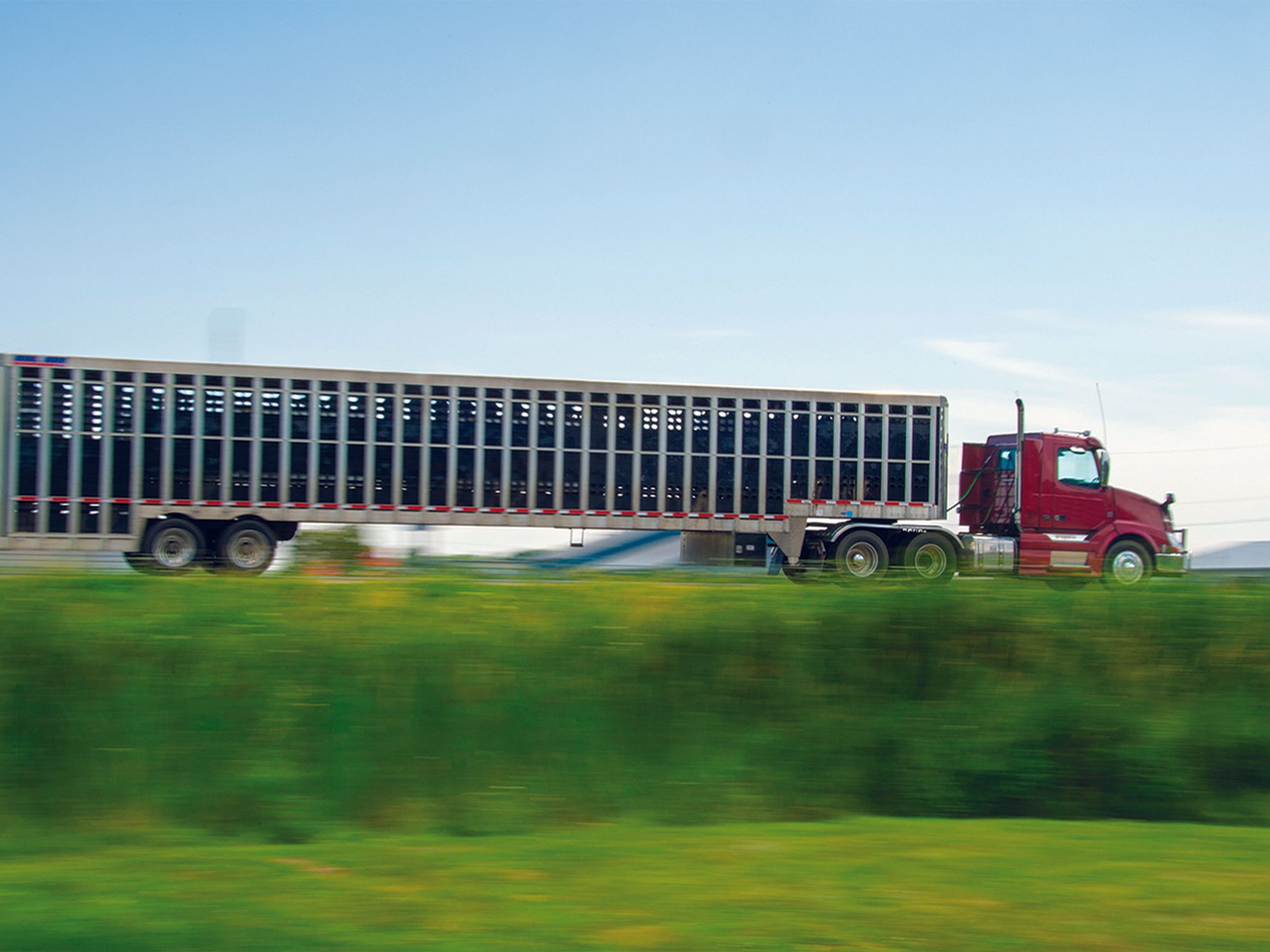Agricultural operations HOS exemption

- An exemption from the federal HOS rules is available to drivers who transport “agricultural commodities” or “farm supplies for agricultural purposes” within a 150 air-mile radius of the product’s source, distribution point, or wholesale distribution point during state-defined planting and harvesting seasons.
The federal hours-of-service (HOS) requirements in Part 395 do not apply to drivers who transport the following products during planting and harvesting periods, as determined by each state:
- “Agricultural commodities” from the source of the agricultural commodities to a location within a 150 air-mile radius of the source;
- “Farm supplies for agricultural purposes” from a wholesale or retail distribution point of the farm supplies to a farm or other location where the farm supplies are intended to be used within a 150 air-mile radius from the distribution point; or
- “Farm supplies for agricultural purposes” from a wholesale distribution point of the farm supplies to a retail distribution point of the farm supplies within a 150 air-mile radius from the wholesale distribution point. (395.1(k)).
Federal definitions (395.2)
Agricultural commodity: (1) Any agricultural commodity, non-processed food, feed, fiber, or livestock as defined in this section. (2) The term “any agricultural commodity” means horticultural products at risk of perishing, or degrading in quality, during transport, including plants, sod, flowers, shrubs, ornamentals, seedlings, live trees, and Christmas trees.
Farm supplies for agricultural purposes: Products directly related to the growing or harvesting of agricultural commodities during the planting and harvesting seasons within each state, and livestock feed at any time of the year. This can include fuel if the entire load of fuel is used for agricultural purposes.
Livestock: As defined in sec. 602 of the Emergency Livestock Feed Assistance Act of 1988 [7 U.S.C. 1471], and as amended, insects, and all other living animals cultivated, grown, or raised for commercial purposes, including aquatic animals.
Non-processed food: Food commodities in a raw or natural state not subjected to significant post-harvest changes to enhance shelf life, such as canning, jarring, freezing, or drying.
The term “non-processed food” includes fresh fruits and vegetables, and cereal and oilseed crops which have been minimally processed by cleaning, cooling, trimming, cutting, chopping, shucking, bagging, or packaging to facilitate transport by commercial motor vehicle.
Key points
- The exception applies to the initial 150 air-miles from the source of the commodity, regardless of the distance to the destination.
- Once a driver operates beyond the 150 air-mile radius of the source, the driver is then subject to the limits under the HOS rules and must record those hours until the driver crosses back into the area within 150 air-miles of the original source of the commodities.
- Farm supplies for agricultural purposes may be shipped from a wholesale or retail distribution point to a farm or other location where they will be used, within a 150 air-mile radius from the distribution point; or from their wholesale distribution point to their retail distribution point within a 150 air-mile radius from the wholesale distribution point.
- The “source” or measuring point for the 150 air-mile radius of an exempt load that has additional stops, is the first place where the commodity was loaded onto an unladen trailer. The following points also apply when determining the source:
- The source may be any intermediate storage or handling location away from the original source at the farm or field, provided the commodity retains its original form and is not significantly changed by any processing or packing.
- When making multiple trips, the first trip, and the 150 air-mile exception around that source, terminates once all agricultural products are offloaded. A new source for a new trip may be identified, and the 150 air-mile radius will be from that source.
- If commodities or livestock retain their original form and are “non-processed,” a new “source” may be identified.
- Drivers entering the U.S. from Canada or Mexico are also eligible to claim this exemption.
